Bullfrogs, also known as “American bullfrogs,” are large semi-aquatic amphibians. They are considered to be “true frogs,” and truly are the archetype for what most people imagine when they think of a frog. These large amphibians are interesting creatures, and are used in a number of different ways. Read on to learn about the bullfrog.
Description of the Bullfrog
The top of a bullfrog is green, and the belly is cream or yellow colored. They have large eyes with almond shaped pupils. Bullfrogs have short front legs, and long, muscular rear legs. The rear feet have webbing between most of the toes, but the front feet have no webbing. Male bullfrogs are smaller than females, and have bright yellow throats.
Interesting Facts About the Bullfrog
For a seemingly uninteresting animal, bullfrogs are incredibly adept at survival. They are capable of some impressive behaviors, and are uniquely adapted for swampy, semi-aquatic life.
- Can’t Catch Me! – Bullfrogs are on the menu for a wide variety of other animal species. Having an effective escape method is extremely important when everyone in the swamp is hungry for frogs’ legs. Thankfully, these frogs are expert hoppers. In fact, bullfrogs are capable of jumping ten times their own body length!
- Frog’s Legs on the Menu – Bullfrogs are prey to many other species, but did you know that bullfrogs will eat their own kind? These voracious predators will eat anything that can fit in their mouths, including other bullfrogs!
- Long-Limbed and Long Lived – American bullfrogs live surprisingly long lives. In the wild, these frogs can live up to 10 years. In human care they can survive for up to 16 years!
- What’s in a Name? – Some people believe bullfrogs sound similar to a bellowing bull cow. This is actually where the bullfrog got its name! This booming call can be heard from a quarter of a mile away.
Habitat of the Bullfrog
Bullfrogs must remain in aquatic or semi-aquatic environments. They prefer still, fresh water, but are occasionally found in slow moving streams. The frogs live in waters with dense aquatic vegetation, but their babies, called “tadpoles,” prefer water without vegetation.
Distribution of the Bullfrog
- Natural Range – Naturally, bullfrogs are native to the eastern United States. From Texas up into Maine and Canada, bullfrogs can be found in freshwater habitats.
- Introduced/Invasive Range – As an invasive species, bullfrogs outcompete other frog species, causing population decline. They are also resistant to the deadly chytridiomycosis fungus, and as they spread, so does the fungus. Bullfrogs have spread or been introduced across the vast majority of North and Central America, as well as northern South America. They have also been introduced in Europe, and large portions of Asia.
Diet of the Bullfrog
These frogs are ambush predators. They lie in wait for a likely prey item to pass close by. The frog rotates to face the prey, takes a few bounces to approach it if necessary, and then leaps towards the prey and whacks it with it’s sticky tongue. After capture, the frog swallows the prey whole. These frogs will eat fish, tadpoles, snails, small reptiles, insects, rodents, birds, and even bats!
Bullfrog and Human Interaction
Bullfrogs are frequently eaten, in fact it is quite common to catch and eat bullfrogs in the southern United States. The rear legs of the bullfrog are the only parts of the animal that are eaten, and they resemble tiny chicken drumsticks.
American bullfrogs are also used in science classes for dissection, across the United States and the world.
Domestication
Some attempts at commercial domestication of bullfrogs have been made. These have failed because it is difficult to raise and breed bullfrogs. They are susceptible to disease, and frequently cannibalize one another.
Does the Bullfrog Make a Good Pet
Bullfrogs can be kept as pets, but can be difficult to care for. As a pet owner, it is important not to release your bullfrog as it could pose an invasive species threat or spread disease to wild animals.
Bullfrog Care
Keeping bullfrogs is difficult. They can jump substantial distances, so keeping them contained can be difficult. They also will not feed on pelleted food, so live food must be provided. Bullfrogs will also frequently cannibalize one another.
Behavior of the Bullfrog
Male bullfrogs will congregate in choruses, or groups of animals singing together. These choruses may attract more females, allowing males a greater reproductive success rate. The males will develop territories, spaced 10-20 ft. apart. They will defend these territories aggressively, and call for females to attract a mate.
Reproduction of the Bullfrog
Female bullfrogs are drawn to areas with singing males. The female browses through the selection of males in their territories, and initiates the mating process. The male climbs onto the female, and she chooses a spot to lay her eggs. Female bullfrogs can lay up to 20,000 eggs per breeding. While the female lays her eggs, the male releases sperm to fertilize them.
The eggs hatch into tadpoles, which are fully aquatic. As the tadpoles grow and feed, they metamorphose, or transform, into frogs. The tadpoles will grow legs, and then slowly reabsorb their tails. In warmer areas this may take a few months, in colder areas it can take three years for a tadpole to develop into a frog.

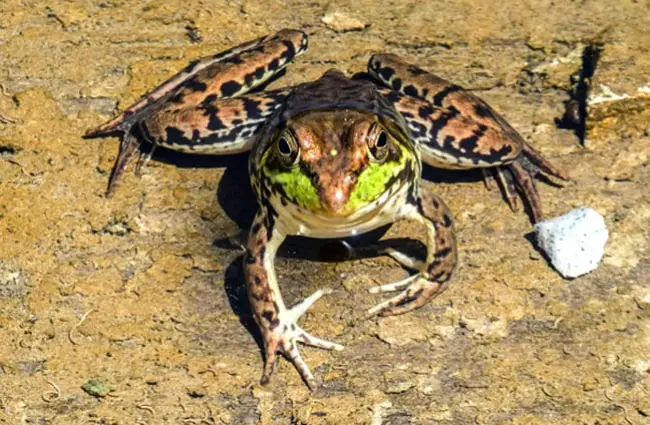
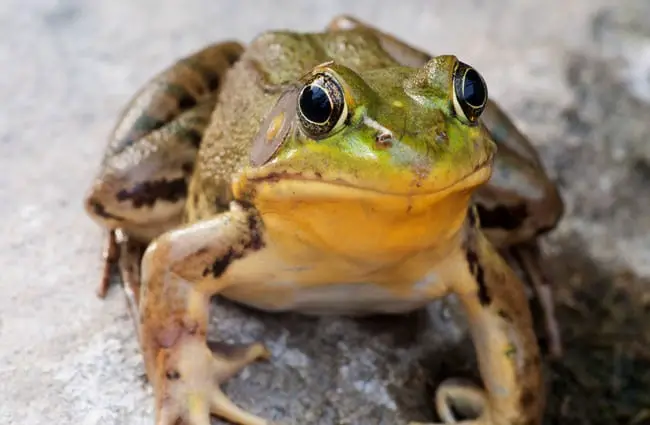
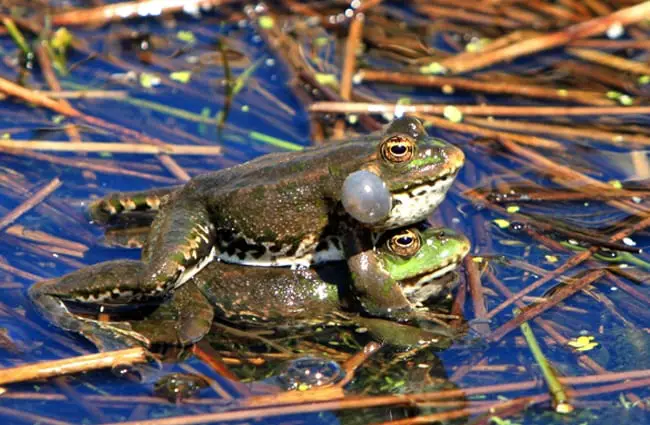
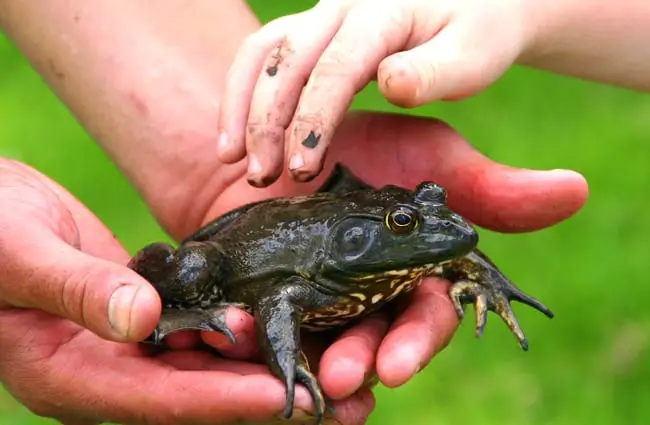

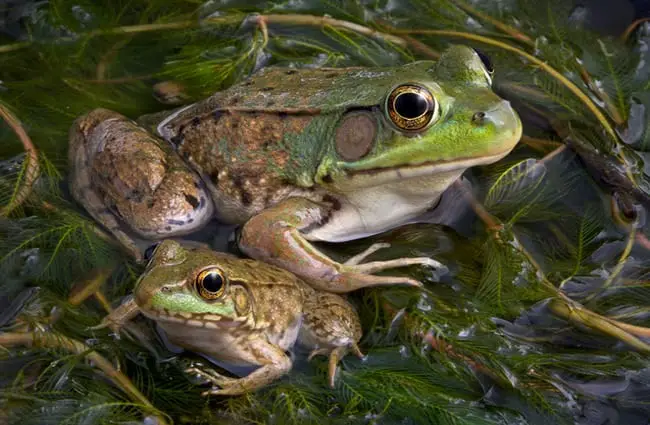

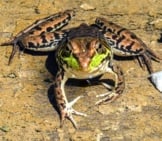
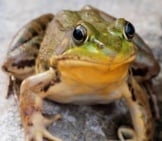
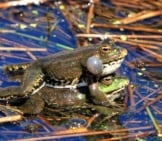
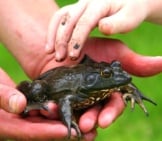
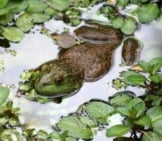
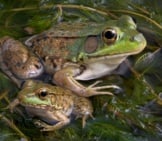
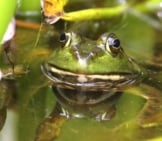
![Red Angus Closeup of a beautiful Red Angus cowPhoto by: U.S. Department of Agriculture [pubic domain]https://creativecommons.org/licenses/by/2.0/](https://animals.net/wp-content/uploads/2020/03/Red-Angus-4-238x178.jpg)












![Red Angus Closeup of a beautiful Red Angus cowPhoto by: U.S. Department of Agriculture [pubic domain]https://creativecommons.org/licenses/by/2.0/](https://animals.net/wp-content/uploads/2020/03/Red-Angus-4-100x75.jpg)

